
Publisher:
Bonnie King
CONTACT:
Newsroom@Salem-news.com
Advertising:
Adsales@Salem-news.com

~Truth~
~Justice~
~Peace~
TJP
Jan-13-2013 17:38

 TweetFollow @OregonNews
TweetFollow @OregonNews
New Mexico's Next Century
Kent Paterson for Salem-News.comWill the futures of New Mexico’s next generations be given real attention, or will the deep-pocketed, special interests once again claim the state mantle?
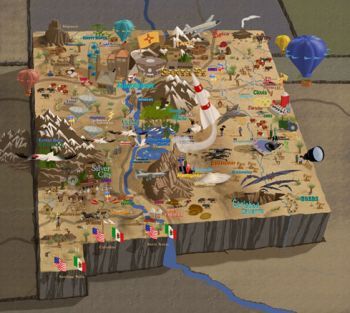 Courtesy: karencarr.com |
(LAS CRUCES, NM) - Editor’s note: Today’s essay concludes Frontera NorteSur’s current series on New Mexico history since 1912. Since 2008, FNS has posted original articles and radio documentaries on different facets of state history and culture, especially as they relate to southern New Mexico. Interested readers can find the pieces on the FNS website under the Centennial section at: http://fnsnews.nmsu.edu/
Although educators teaching the New Mexico Centennial and related subjects might find the site of particular usefulness, the information is of interest to the broad public. This article offers the editor’s observations on the broad forces, interests and issues which have shaped New Mexico since it became a U.S. state in 1912, and how they might continue to define the Land Enchantment in the coming years.
In Santa Fe, the New Mexico state government is winding down its celebration of the Centennial of Statehood, a commemoration of the Land of Enchantment’s admission to the United States as a state in 1912. Pared down to fit governmentally austere times, the Centennial celebration lurched forward with the help of private sponsors including Los Alamos and Sandia national laboratories, the Albuquerque Journal, Clear Channel, Wells Fargo, Bank of America, Thornburg Investment Management, AT&T, the Union Pacific and Burlington Northern Santa Fe railroad companies, and La Fonda hotel, among others.
In one way or another, the sponsors have been among the dominant economic and political players since statehood.
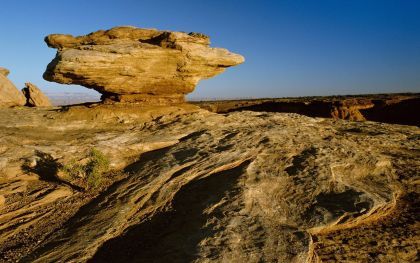 Courtesy: peteuniverse.com |
A final Centennial act is scheduled for February 11, when a chain of commemorative bands containing messages from children with their future hopes for New Mexico will be put on display at the State Capitol.
According to the outgoing New Mexico Centennial commission, New Mexico Governor Susana Martinez will be presented on the same day with a book that contains the children´s dreams for the state and which represents an “excellent opportunity for New Mexico’s youth to embrace the future of New Mexico-the next 100 years."
New Mexico’s road to statehood, of course, was much different than that taken by the 13 colonies which revolted against British rule on the Atlantic seaboard in 1775-76. Part of the Spanish empire and later the Mexican Republic, New Mexico was militarily occupied by the United States during the 1846-48 Mexican war and then subjected to territorial status for more than half a century.
Prior to statehood in 1912, New Mexico was a largely rural, isolated place with a native population that spoke either the various indigenous or Spanish tongues.
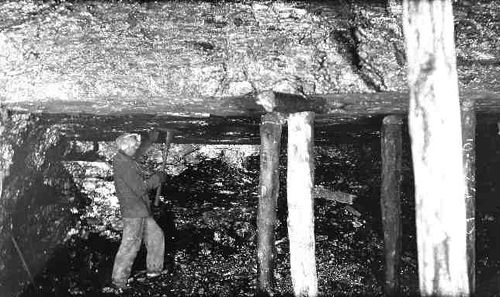 Interior of Dawson, New Mexico Mine. Inside Dawson Coal Mine, 1920's, courtesy: legendsofamerica.com |
Great changes, however, loomed large and soon a new colonial or semi-colonial economy of mineral exploitation and livestock production was revved up for outside markets. The Native American people were “given” reservations, which in the case of the Navajo and Apache peoples, occurred only after they were put on death marches or deported to the bantustan-like territory of Oklahoma. Little by little, the Spanish-speaking Nuevo Mexicanos lost their patrimony of land grants awarded by the Spanish and Mexican governments.
Economic and technological forces further transformed the old land. Promising the taming of a wild river and the dawning of a massive, cash crop agricultural economy, the Rio Grande Project dammed the once fearsome river and spawned the Promised Land of modern irrigation agriculture in the Hatch, Mesilla and El Paso valleys. There were both winners and losers in the river’s transformation.
Just upstream from the new Elephant Butte Dam completed in 1915-16, the Nuevo Mexicano villages of Cantarecio, Paraje, San Albino, San Jose, Mulligan Ranch and Bosque Bonito were condemned and flooded into the forgotten pages of history, according to a 2006 historical account penned by Paul Harden and published in Socorro’s El Defensor Chieftan newspaper.
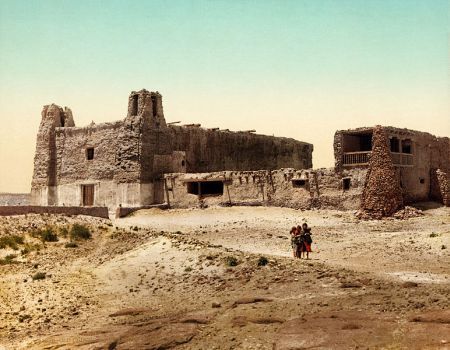 Old church at pueblo of Acoma, New_Mexico, 1902 Courtesy: Wikimedia |
In one of the recurring, tragic ironies of New Mexico history, some of the displaced villagers were flooded out again after their new home of San Marcial was slammed repeatedly by the Rio Grande’s raging wrath.
Downstream, business boomed as a reliable, steady source of irrigation water nourished the cotton and later chile, onion, pecan and dairy industries. To produce and distribute the goods for a world market, multiple generations of Mexican workers, some with papers and some without, were brought in to work the land. Many eventually settled along with their families and the slang of Chihuahua, Coahuila and Zacatecas melded, often uneasily, with the argot of the U.S. South, Europe and Japan in the new demographic portrait and multi-linguistic soundtrack of Dona Ana and nearby counties.
Mexicanos also played-and continue to play- a fundamental role in the mining, construction, service and other industries of the state. Immigration from south of the border kept the Spanish language thriving in the officially bilingual state. Today, New Mexico’s airwaves crackle with the sounds of Los Tigres del Norte, the balladeers of the contemporary Mexican migrant, along with those of New Mexican musical stalwarts like Roberto Griego and Felix y los Gatos.
Any history of post-1912 New Mexico cannot underplay the impact of World War Two. Thousands of New Mexicans went off to serve in the military overseas, many never to return, while others relocated to work in California military bases and war plants. As the structure of traditional society was torn asunder, the New Mexican Diaspora spread across the globe, glued together by a remaining plot of family land, annual pilgrimages to town and church fiestas, care packages of chile, and an undying reverence for the motherland kept burning in the soul by remembrances of summer vistas and sunsets, friendly matanzas, the autumn smell of roasting green chile, and maybe the memory of a lost love somewhere down by the banks of the Rio Grande.
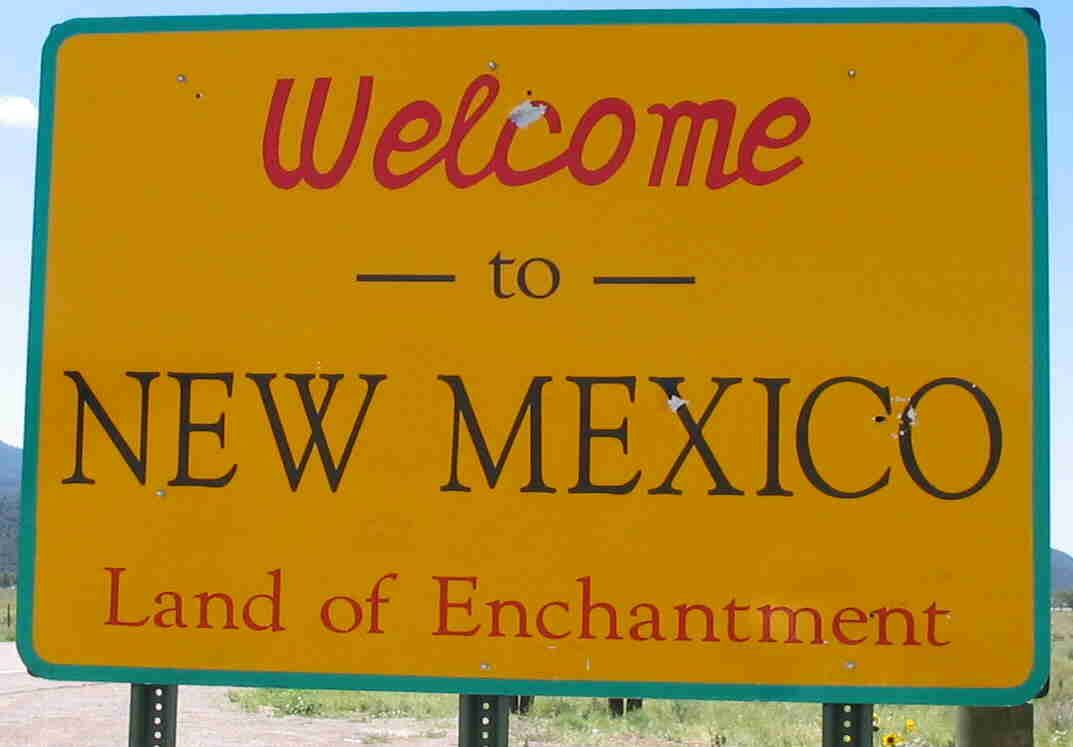
After the war, New Mexico underwent a historic spurt of economic and population growth. What later became known as the military-industrial complex was firmly implanted on the land where the atomic bomb was invented and tested. Feeding a new nuclear industry, Native lands were mined for uranium. Another off-shoot of government, the electronics industry sited one of its first world production centers in the Albuquerque area.
Besides profits and jobs for some, the new industries left behind groundwater and soil contamination, sick and dying Navajo and Pueblo miners and seriously ill electronics workers, many of them Chicanas getting a steady paycheck for the first time, who were exposed to solvents and other dangerous substances used in a widely-touted “clean” industry.
The colonial economy was simply updated. The mineral colony became an energy colony, and raw goods-and profits- continued flowing out-of-state. Successive Democratic and Republican administrations adopted a bipartisan economic development strategy, euphemistically called “job creation” or “economic growth” but centered on policies that might be termed “corporate fishing.” The bait was property tax breaks through industrial revenue bonds, sales tax refunds, utility line extensions, taxpayer-funded employee training, and so on.
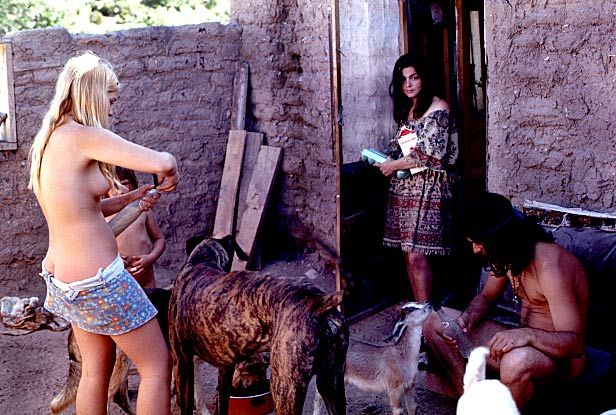 New Mexico Commune 1969. Photo: altmanphoto.com |
In one way or another, virtually every private industry that’s come to New Mexico after the latter half of the 20th century, whether its high-tech, Hollywood or the promised new age of space tourism, has benefited from this schema.
Once in a while the state snagged a big one, but much of the “catch” eventually wiggled off the hook leaving the little fishers with empty tackle boxes and drained lakes, so to speak. When New Mexico embarked on this strategy, it was one of the poorest states of the Union. More than 40 years later, it remains at the bottom of the heap. Nonetheless, “corporate fishing” is still the favorite of local economic planners and overseers.
Amid the booms and the busts, the historic myth of the three cultures living in harmony-Native, Hispano and Anglo-exploded. Given the presence of African-American and Asian residents, the three cultures story had glaring omissions from the inception. In the 1960s and 1970s, Nuevo Mexicanos fought for the return of the land grants, struggled against police brutality, advocated for community control of institutions, marched for equality in higher education, and demanded respect for the Spanish language. The people of Taos Pueblo demanded and got the return of their sacred Blue Lake, and Navajos marched against rampant racism in the bordertowns of Gallup and Farmington. It was the time of Reies Lopez Tijerina and the Alianza, the Black and Brown Berets of the Chicano Movement, the Coalition for Navajo Liberation, the American Indian Movement, and the anti-Vietnam War protest movement.
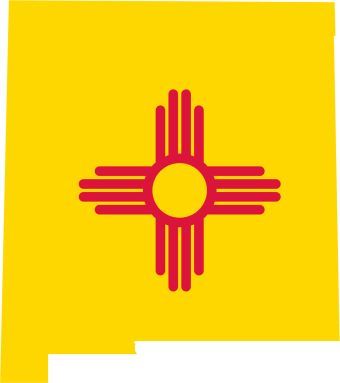
Many of the issues and demands raised in those heady times decades ago are still pending today.
Hard times came again with the Great Recession of 2008. While it is still too early to fully gauge the impacts of the economic crash on New Mexico, one result has been the institution of a state austerity policy, perhaps different in scope but the same in character as similar measures recently imposed in Europe. Hiring and wage freezes for state employees, government workforce lay-offs and higher tuition expenses for university students were a few of the treats of austerity a la Nueva Mexicana. It’s virtually impossible to say how many lives have been crushed, dreams dashed and aspirations frustrated during the last five years.
Since the late 1970s, the cost of attending college soared for New Mexicans, as New Mexico and other states incrementally and quietly reduced state support for higher education, shifting the costs to the consumer. Private donations, contracts and grants rounded out university budgets, and represented the gradual semi-privatization of the Academy.
In response to student protests against soaring tuition costs about 20 years ago, state leaders arguably embarked on a fool’s road of “higher education affordability” by promising eligible undergraduates a scholarship funded with state lottery money, but really doing nothing to brake the tuition increase spiral, which outpaced general inflation.
The state lottery money set aside for scholarships is expected to dry up within the next two years, and trial balloons are floating to test public reaction to restricting admissions to state universities. Such a practice prevails in neighboring Mexico, which provides only sufficient funding to admit only a sliver of eligible university students but disguises the system with tests supposedly measuring academic readiness.
 New Mexico's homeless. Photo: pressTV |
While some states have commenced an uncertain yet unequal economic recovery, New Mexico still seems mired in the depths of the Great Recession, shedding 4,800 jobs last year alone, according to a report from Albuquerque media outlet KOB. The employment crisis is another occasion for some to urge more corporate favors as a way of luring outside capital investment and jobs. Corporate anglers argue that New Mexico’s corporate income tax is too high in comparison with neighboring states like Texas and Arizona. What they seemed to have missed is that California, with higher state corporate income taxes than Texas or Arizona or New Mexico, fared better on the employment front in 2012 than lower-taxing states.
“And job growth numbers were led by industries such as transportation, construction and leisure and hospitality, rather than high tech, which has almost singlehandedly powered the local economy,” wrote Andrew S. Ross in the San Francisco Chronicle last month.
As the Great Recession unfolded, New Mexico was simultaneously struck by the Great Climate Crisis. Within the past few years, New Mexicans have watched their forests wither up and then burst in flames, to the tune of hundreds of thousands of acres. And if the normally dry climate wasn’t already dry enough, it kept getting drier. According to the National Weather Service (NMWS) and the Natural Resources Conservation Division (NRCD) of the U.S. Department of Agriculture, 2011 and 2012 were the driest and warmest two years on record dating back to 1895. Of a single year, only 1956 was drier than 2012.
 Poverty challenges college students in N.M. |
The drought translates into huge problems for river water users, and puts great pressure on precious groundwater supplies.
“In light of the desiccating facts, it is no surprise that New Mexico reservoir storage is well below normal on the Rio Grande Basin, Canadian Basin and Pecos Basin,” the NWS and NRCD wrote in their latest snowpack forecast report. According to the two agencies, the situation is not expected to improve in 2013. Elephant Butte Reservoir, for instance, is projected to receive Rio Grande water flows of 37 percent normal this year, according to the forecast. On a related note, the U.S. Bureau of Reclamation recently warned users of San Juan-Chama water, which includes the big city of Albuquerque, to not be surprised by a possible 20 percent reduction in available water supplies in 2013.
In a state where massive housing subdivisions and golf courses were in vogue not too long ago, the desert is reclaiming its due, but this time with the assistance of humans and their carbon culture.
On Tuesday, January 15, 2013, the next session of the New Mexico State Legislature begins. Lawmakers and the Governor will have a historic opportunity to begin putting New Mexico on a new, 21st century path that breaks with the colonial-like chains of the past, addresses the inequities of the past and the present, and forges a new economy compatible with climatic reality. But it remains to be seen if any visionary voices will emerge from the double-dealing and double-speak that frequently riddles the annual gathering of the state’s “citizen” legislators. Will the Land of Enchantment continue as an exporter of capital, products and people, or will it finally begin shaking off its historic status as a dream land for the rich and famous but often a nightmare for working Joe and Jennifer, who struggle to pay the bills and raise the kids in a half-decent manner. Will the futures of New Mexico’s next generations be given real attention, or will the deep-pocketed, special interests once again claim the state mantle?
-Kent Paterson
Frontera NorteSur: on-line, U.S.-Mexico border news
Center for Latin American and Border Studies
New Mexico State University
Las Cruces, New Mexico
 |
 |
 |
Articles for January 12, 2013 | Articles for January 13, 2013 | Articles for January 14, 2013
Salem-News.com:





Terms of Service | Privacy Policy
All comments and messages are approved by people and self promotional links or unacceptable comments are denied.
[Return to Top]
©2025 Salem-News.com. All opinions expressed in this article are those of the author and do not necessarily reflect those of Salem-News.com.